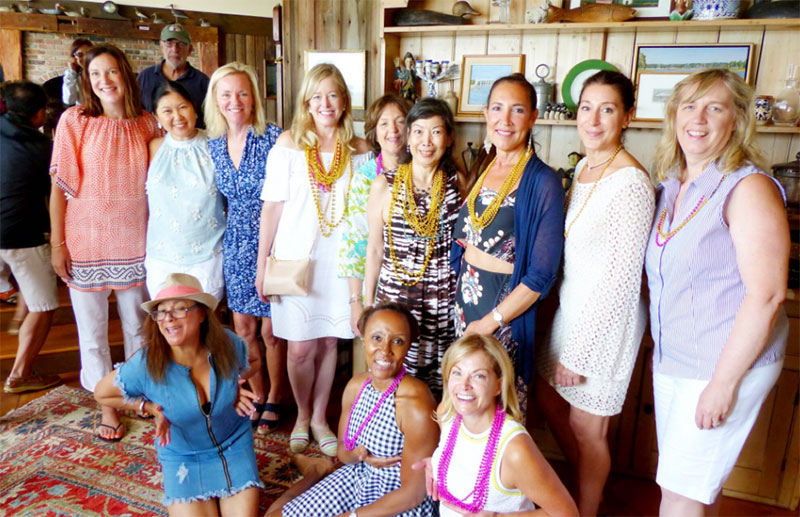
Lymph Node Transfer
Introduction to Autologous Lymph Node Transfer
Over 2.5 million women with a history of breast cancer are alive in the United States today. One study reports a 7% incidence after sentinel lymph node biopsy, but it is limited by a short-term follow-up of 6 months. A larger long-term study reveals that 42% of all breast cancer survivors develop clinically detectable upper extremity lymphedema (UEL) within 5 years of treatment, and another study of premenopausal breast cancer survivors has shown that 54% had arm or hand swelling within the first 36 months of treatment. In fact, a 20-year longitudinal study has demonstrated that 77% of those who develop UEL report an onset within 3 years, with the remaining patients developing UEL at a rate of 1% a year. UEL is a pervasive problem among breast cancer survivors. All breast cancer patients are at lifetime risk, and there is no accepted cure.
Effect Of UEL On Quality Of Life (QOL)
As advances in breast cancer treatment lengthen survival, UEL has emerged as a high-impact problem profoundly impairing QOL in breast cancer survivors. The Iowa Woman’s Health Study (IWHS) collected data on 1,287 breast cancer patients and found that 30% had arm swelling, 18% had impaired arm function, and 21% had arm pain or discomfort. Despite this, 92% of patients had not been diagnosed or treated. Evidence of UEL was often neglected by clinicians, leaving the problem to be underestimated and underappreciated.
Practical consequences of UEL include severe restrictions in lifestyle and activities of daily living. Women suffering from UEL may not be able to use a zipper or button to dress, write or type, and may be forced to give up hobbies, driving, and paid employment. Patients may not be able to lift the affected arm to carry a shopping bag. Women have difficulty finding clothing that fits or feels self-conscious wearing a bathing suit or short sleeves – particularly when they have to appear in public wearing a compression garment around the affected limb, a standard part of lifetime maintenance treatment. Sufferers report social stigma and shun group interactions to avoid stares from friends, family, and strangers. Sexual relationships suffer. Women are constantly reminded of their disease, even after treatment for primary breast cancer has ended because treatment for UEL generally does not end. Although they are breast cancer survivors, many women report UEL management to be more distressing than coping with breast cancer itself as it forces permanent disruptions to personal, work, and social lifestyles.
Lymphedema is a chronic condition that results in skin changes, fibrosis with thickened but fragile tissue, loss of normal sensation, impaired function, pain, discomfort, and a sense of heaviness in the affected limb. Once UEL is established, tissue changes and lymphostasis bring about susceptibility to inflammation that can make the affected arm vulnerable to cellulitis from minor infections that would otherwise be insignificant in the normal arm.
Frequent infections due to UEL are known as acute inflammatory episodes (AIE), and often require hospitalization for intravenous antibiotics. Each episode may further damage lymphatic channels and perpetuate a vicious cycle. Scrupulous personal hygiene is necessary to prevent a recurrence, but patients with repeated AIE may need lifelong antibiotic prophylaxis. Regular disruptions for AIE management lead patients to feel anger, frustration, and loss of control.

Current Therapeutic Options
The most recent Consensus Document of the International Society of Lymphology divides therapy of lymphedema into conservative (non-operative) and operative methods. Underlying all methods is an understanding that meticulous skin hygiene and care is crucial, and basic range of motion exercises of the extremities, especially combined with external limb compression and limb elevation, is also important. Currently, the goal of all accepted therapy is to slow the progression of disease; there is no accepted cure.
Complete Decongestive Therapy (CDT)
Complete decongestive therapy is the standard of care for UEL, but it is time-consuming, expensive, and requires lifelong maintenance. Acute management involves 2-5 sessions per week in a specialized lymphedema clinic for 1-4 months or more. A trained lymphedema therapist performs manual lymphatic drainage, multilayer low-elastic compression bandages, exercise, and skin and nail care. Once outpatient treatment is completed, the patient continues home treatment with skincare and exercise, self-massage, and use of a compressive sleeve and glove during the day and/or arm bandaging at night. Complete and lifelong compliance is required to prevent the progression of the disease, however. From the patient’s perspective, the treatment itself is a constant reminder that prevents her from living a normal life, leaving many women anxious to find a more expedient and definitive therapy.
Autologous Lymph Node Transfer (Alnt) – Possible Cure?
ALNT is an innovative technique developed by Corinne Becker, MD, a plastic surgeon in Paris, France, that involves microvascular transfer of 3-4 lymph nodes in a fat flap anastomosed to a vascular pedicle to treat UEL after mastectomy. After surgery, patients undergo intensive manual lymphatic drainage for 3-6 months, after which 62.5% are able to stop all physiotherapy. In Dr. Becker’s experience treating 4000 patients with UEL over a period of 20 years, 40% of patients had complete resolution of UEL, 28% had greater than 50% reduction of arm volume, 28% had less than 50% reduction of arm volume, and 2% had no resolution of arm volume. Isotopic lymphoscintigraphy demonstrated lymph nodes in 25%, new lymphatic channels in 23%, new vessels and nodes in 21%, and no change from preoperative lymphoscintigraphy in the remaining cases. ALNT is technically straightforward, effective, and allows many patients to stop maintenance therapy.
In May 2011, after studying with Dr. Becker in France, Dr. Chen co-chaired a lymphedema symposium at the New York Center for the Advancement of Breast Reconstruction at NYEEI to allow Dr. Becker to teach plastic surgeons in the United States the techniques of ALNT. Primary indications for ALNT include recalcitrant lymphedema, recurrent infections, and pain. In a study of patients with post-mastectomy neuropathic pain, ALNT also successfully relieved radiation-induced brachial plexus neuropathy associated with lymphedema, permitting a return to work and normal activity without medication.
In our practice, we primarily perform ALNT for upper extremity lymphedema, and the lymph node transfers for the arm are usually performed in conjunction with autologous tissue breast reconstruction. As with all of our microsurgical procedures, we believe it is very important to have a tight, cohesive team that works together safely and efficiently. In our practice, ALNT is always performed by two experienced board-certified microsurgeons with specialized expertise. When the ALNT is performed with a DIEP or SIEA flap breast reconstruction, then the procedure and postoperative recovery is similar to a DIEP or SIEA flap breast reconstruction without ALNT.
Why Choose Dr. Chen for Lymph Node Transfer
Dr. Constance Chen is a board-certified plastic surgeon with special expertise in using innovative, natural techniques to optimize medical and cosmetic outcomes after plastic and reconstructive for women. She understands that every woman has her unique concerns and treatment preferences, and focuses on giving each of her patients the specialized attention they deserve. Dr. Chen is a member of the American Society of Plastic Surgeons and prioritizes patient safety and shared medical decision-making.
How Much Does Lymph Node Transfer Cost in NYC?
Lymph Node Transfer in NYC is often covered by insurance, but an individual’s insurance benefits will vary depending on the carrier. A personal consultation is necessary to determine a surgical plan. Once a surgical plan has been developed, Dr. Chen’s staff can give you a cost estimate and answer any financial questions you may have.
Schedule Your Consultation
If you’re interested in Autologous Lymph Node Transfer in NYC, contact our office and schedule your one-on-one consultation with Dr. Chen. We look forward to discussing your goals and helping you become comfortable and confident.
Reach out to us

